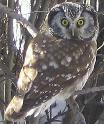
Wildlife Habitat Response Model
A Short Introduction


|
Wildlife Habitat Response Model
|

|
|
Documentation and User Manual:
[User guide (21-page 371 KB PDF)]
[Fact sheet (1-page PDF)]
The Wildlife Habitat Response Model: WHRM Input interface v. 2005.03.22 (for review only) by Elena Velasquez & David Hall Model developed by: David Pilliod Team leader Elaine Kennedy Sutherland, USDA Forest Service, Rocky Mountain Research Station |

|